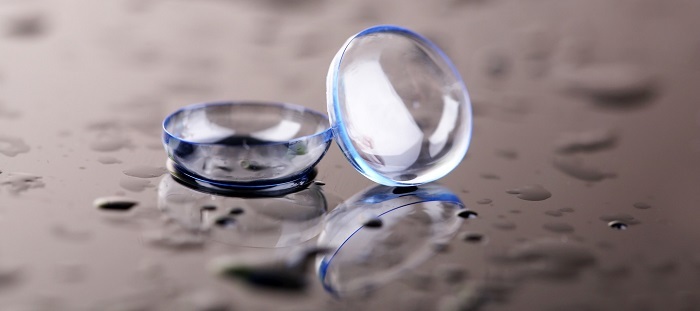

Accessories, especially stylish frames, are the ideal approach to improving your overall appearance. With eyewear, one may transform their appearance into whatever they want it to be: gorgeous, nerdy, eccentric, or classy. Contact lenses, sunglasses, and glasses—also referred to as eyeglasses or spectacles—are common types of eyewear. Eyewear can also contain more practical eye protection, such as goggles. In contrast, a type of eyewear called a blindfold is used to obstruct eyesight for a variety of reasons.

Over the past 1,000 years, people have used eyewear to protect and improve their vision. Some of the earliest examples are the snow goggles worn by the Inuit and Yupik peoples of the Arctic. Since the invention of bifocal lenses in 1784 by American statesman and inventor Benjamin Franklin, eyewear technology has advanced significantly. Hand-held magnifying lenses were first used by Italian artists and scholars in the 13th century. Lenses have changed more in the last 20 years than they had in the previous 200. This is partially due to the explosive growth in computing power over the past 20 years. Since optical calculations can be time-consuming and challenging, lens-making capabilities increase with every leap in computer speed.
Glasses, also known as eyeglasses or spectacles, are types of vision eyewear that consist of lenses (clear or tinted) mounted in a frame that is held in front of a person’s eyes. Typically, a bridge is used to hold the glasses over the nose, and hinged arms (also referred to as temples or temple pieces) are used to hold the glasses over the ears. Although reading glasses and nearsightedness glasses are commonly used for vision correction, they are also worn for aesthetic purposes in the absence of specialised lenses.For lab technicians or construction workers, safety glasses offer eye protection against flying debris; these glasses may feature additional protection on the sides of the eyes in addition to the lenses. Certain types of safety glasses are used to protect against visible and near-visible light or radiation. In some sports, like squash, eye protection is provided by the use of glasses. If you wear glasses, you can use a strap to keep them from sliding off. To prevent loss and breakage, people who wear glasses only occasionally may have the glasses attached to a cord that goes around their neck. For those who must work in these conditions, losing their glasses would be detrimental.
Sunglasses or sun glasses are a type of protective eyewear primarily made to keep the eyes from being hurt or damaged by strong sunlight and high-energy visible light (more names below). The existence of spectacles or glasses with colored, polarized, or darkened lenses allows them to occasionally serve as a visual aid as well. They were also referred to as “sun cheaters” in the early 20th century. Sunglasses have been a common fashion item since the 1930s, particularly on the beach. The American Optometric Association advises wearing UV-blocking sunglasses whenever a person is outside to protect their eyes from UV and blue light, which can result in a number of serious eye conditions. Because they tend to open the pupil and let more UV rays into the eye, dark glasses that do not block UV rays can be more harmful to the eyes than not wearing any eye protection at all.
The term “contacts” refers to a pair of small, transparent lenses worn on the eye’s surface. People all around the world wear contact lenses, which are ocular prosthetic devices, for a variety of purposes, including vision correction, aesthetics, and health. Two-thirds of people who wore contact lenses were female, and the average age of those who wore them was 31. There are several reasons why people decide to wear contact lenses. People who wish to avoid wearing glasses or who want to alter the shape or colour of their eyes are typically motivated by concerns about aesthetics and cosmetics.

Others use contact lenses for visual or utilitarian purposes. Contact lenses often offer greater peripheral vision compared to glasses, and they don’t retain sweat or moisture from precipitation (rain, snow, fog, etc.). Because of this, they may be preferred for outdoor sports and other activities. In addition, contact lens wearers don’t need to worry about compatibility with glasses or get their preferred eyewear fitted with prescription lenses in order to wear sunglasses, goggles, or other eyewear. Furthermore, some eye disorders, such as keratoconus and aniseikonia, can sometimes be addressed more effectively with contact lenses than with spectacles.
Some Other Types are
An article of clothing, typically made of cloth, that is attached to the wearer’s head and covers the eyes to impair vision is known as a blindfold (from Middle English blindfellen). A correctly fitted blindfold blocks vision even when the eyes are open, but a shoddy or trick blindfold may allow the user to see through or around it.
Blinders, also referred to as peepers, are devices attached to or inserted into the beaks of poultry to obstruct their forward vision and help control feather plucking, cannibalism, and occasionally egg-eating. The inventions were the subject of a 1935 patent application. Pheasants, quail, and other game birds are the main uses for them, along with turkeys and laying hens. In contrast to similar devices called spectacles, which have transparent lenses, blinders have opaque lenses and impair forward vision.
A little patch that is worn in front of one eye is called an eyepatch. It could take the form of an adhesive bandage, a plastic gadget affixed to a pair of glasses, or a cloth patch wrapped around the head with an elastic band or thread. It is frequently worn by people to conceal a missing or damaged eye, but it can also be used therapeutically in youngsters to cure amblyopia. Sleep masks are eyepatch devices intended to keep out light while sleeping.
People are now frequently exposed to a wide variety of digital gadgets, including smartphones, computers, tablets, smart TVs, etc. We occasionally fail to recognise the potential risks to our eyes from prolonged use and exposure to these devices. People frequently accessorise with eyewear these days. Regardless of the reason, it protects our eyes from unnecessary eye pollutants while also being fashionable. It also increases people’s faith in us. There are numerous other justifications for wearing glasses, but the main objective is to protect our eyes. Because our eyes are the only organ that allows us to perceive and enjoy the beauty of the world, we must take exceptional care of them.